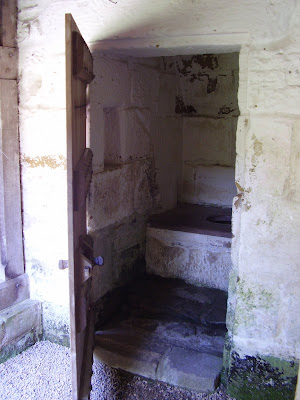
We announced this morning that my colleague Terrie Stott is on the move; she will have been a half-time Team Vicar with us for just two years, and I shall be sorry to see her go along with her insightful challenges about what we do and her creativity. She is to be Chaplain of Whiteley Village (near Cobham in Surrey), an experiment in retirement living created a century ago through the legacy of a department store owner; it is a single community where a huge fan of cottages sits alongside facilities like a nursing home. In many ways it is more like a College than anything else. One member of the congregation at St Michael’s this morning said she already knew lots about it - she’d often stayed there when her cousin’s husband was the Chaplain there in the 1980s.
There are two very striking things for me about Whiteley Village. One is that I remember discussions some ten years ago on a Housing Association board in Grimsby about the real need for groupings of provision so that residents who came to need extra care would not have to abandon the supportive community of which they had become part. It seemed a formidable task to consider creating independent accommodation, sheltered accommodation, residential care, and nursing care, all around one site, and to find ways of negotiating progression between these, but it looks as if Whiteley Village was well ahead of this game a century earlier.
The other is the fact that St Mark’s church there was designed by the same architect as St Michael’s church here (Sir Walter Tapper), and at almost exactly the same time. She brought me back from her interview a pamphlet about St Marks’ with this illustration on the cover, and it is like recognising resemblance of different members of a family. Those who know St Michael’s will instantly recognise the shape of the tower and its roof, will think St Mark’s tower’s turret for its stairs resembles the north turret at St Michael’s, and the pattern of the tracery in St Mark’s south window imitates that of St Michael’s east window. I also notice that one of the screens and some of the stalls inside look as if they’ve come out of the same catalogue. We may be sad to lose Terrie, but I am looking forward to seeing St Mark’s when we go down for her licensing.














